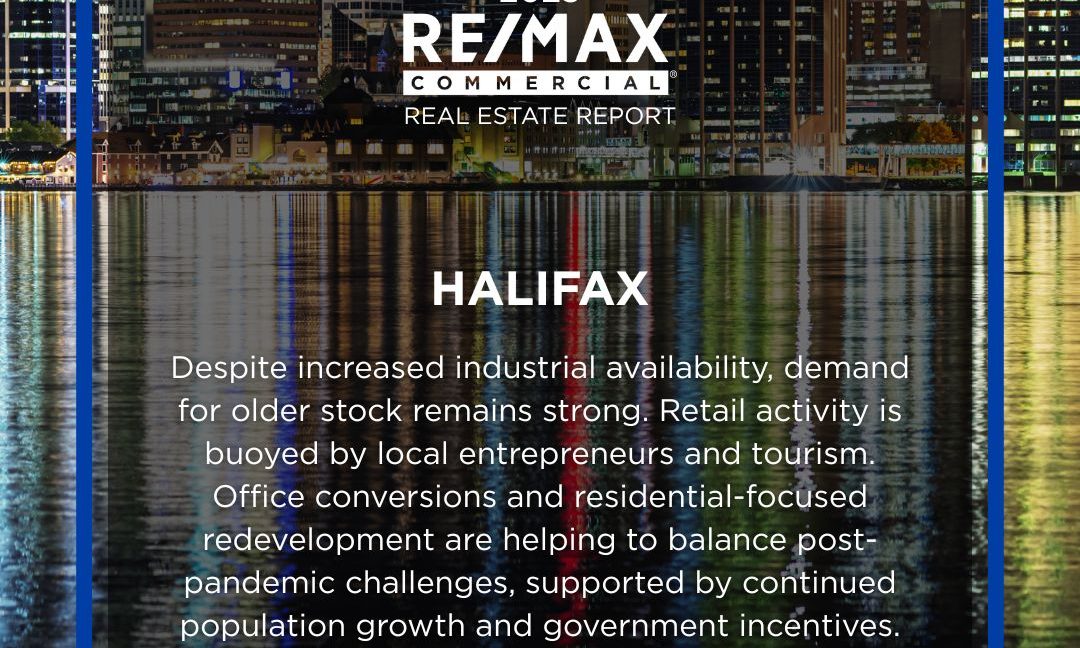Despite the disruption caused by U.S. tariffs, overall activity in the Halifax commercial real estate market remains steady, though off year-ago levels. Confidence exists across the board, but much of the movement is now driven by necessity. While some buyers and tenants are capitalizing on current opportunities, many others—along with landlords and sellers—have adopted a cautious, wait-and-see stance as they seek greater economic clarity.
The industrial asset class continues to be the most active in Halifax, although it has had a significant shift this year. A substantial influx of new space has driven industrial availability rates higher, climbing to 12.7 per cent in the first quarter of 2025, up substantially from the 7.1 per cent reported during the same period last year, according to Altus Group’s Canadian Industrial Market Update. Given slower economic growth and higher lease rates for newer product, hovering around $17 to $18 per square foot, tenants are increasingly hesitant to commit at higher pricing, weighing heavily on absorption rates.
Focus has now shifted to older, existing stock as tenants look to cut costs by taking advantage of lease rates that are at least 25 per cent lower. B-and C-class industrial space in prime areas, including Bayers Lake and Burnside, is experiencing heightened demand as a result, especially for larger buildings with 10,000 sq. ft. or more divided into multiple units. That said, the supply of older, cost-effective product remains tight throughout the municipality.
Population growth slows; housing response moderates
Between 2021 and 2024, Halifax was on a solid growth trajectory, with Statistics Canada’s Annual Demographic Estimates by Census Metropolitan Area (CMA) and Census Agglomerations: Interactive dashboard reporting almost 50,000 new residents, bringing the population of the Halifax CMA to just over 530,000. In response to the growing housing crisis, developers moved to expand the city’s housing stock, adding a significant number of condominium units and purpose-built rentals through the federal government’s Housing Accelerator Fund. More than 4,100 multi-family starts occurred in 2023 alone, an increase of close to 60 per cent over the previous year. However, as immigration and in-migration have decreased, so too has demand for new multi-family housing. Just 3,500 units are currently underway in the city and fewer projects are planned. Although affordability has improved, the anticipated return of tenants and buyers has yet to materialize, even with incentives offered by landlords.
Retail finds its rhythm; local operators rise
Retail has remained resilient, particularly in the downtown core where an increase in tourism has buoyed growth in owner-occupied businesses including restaurants. The steady stream of incoming multinational retailers has subsided, and local entrepreneurs are filling the void. Owner-operators are now increasingly present across a wide range of sectors, including retail, hospitality, and light industrial. According to Altus Group’s Canadian Investment Trends Survey for Q1 2025, Halifax ranks among the top three Canadian markets for opportunities across several asset classes, including food, grocery and bank-anchored strip plazas, suburban multi-unit residential, and multi-tenant industrial.
The office sector has shown signs of strength, with activity picking up in B- and C-class buildings. The city had one of the lowest office availability rates of major Canadian markets in the first quarter of 2025, hovering at 8.3 per cent, down from 14.1 per cent in Q1 of last year. Conversion projects have absorbed much of the space with a substantial spike in non-profits entering the market, with an eye to redevelop existing office space to accommodate residential market needs such as student and senior housing.
Looking ahead, the Halifax commercial real estate market remains well-positioned for continued growth once near-term headwinds, such as tariffs, are addressed. Although down from peak population growth, the region continues to benefit from immigration, in-migration and a steady flow of international students, all of which support demand. A targeted government initiative to unlock investor capital and encourage reinvestment could further accelerate momentum, ensuring Halifax remains a top-performing market in the years to come.
The post Halifax Commercial Real Estate Overview (2025) appeared first on RE/MAX Canada.




